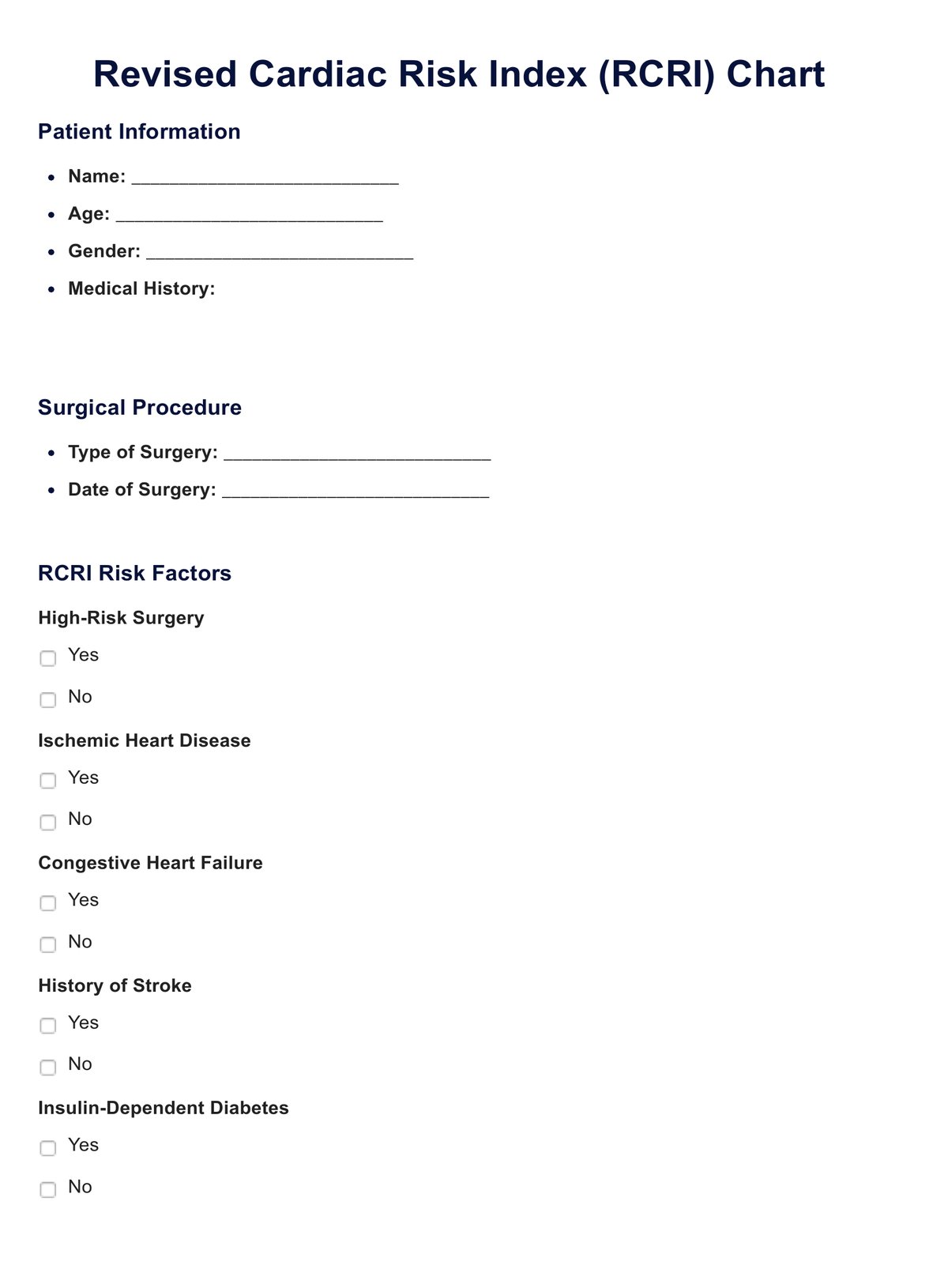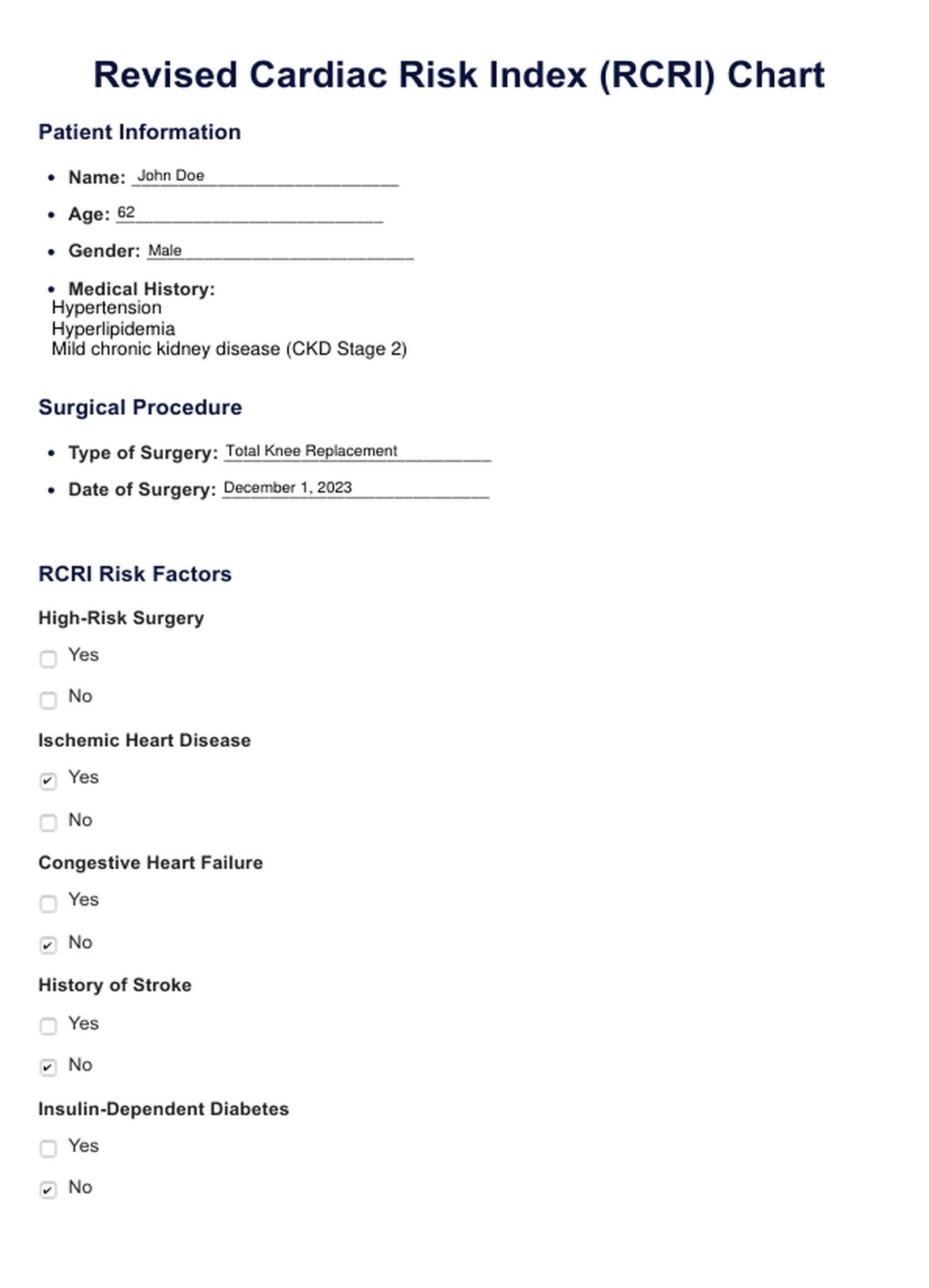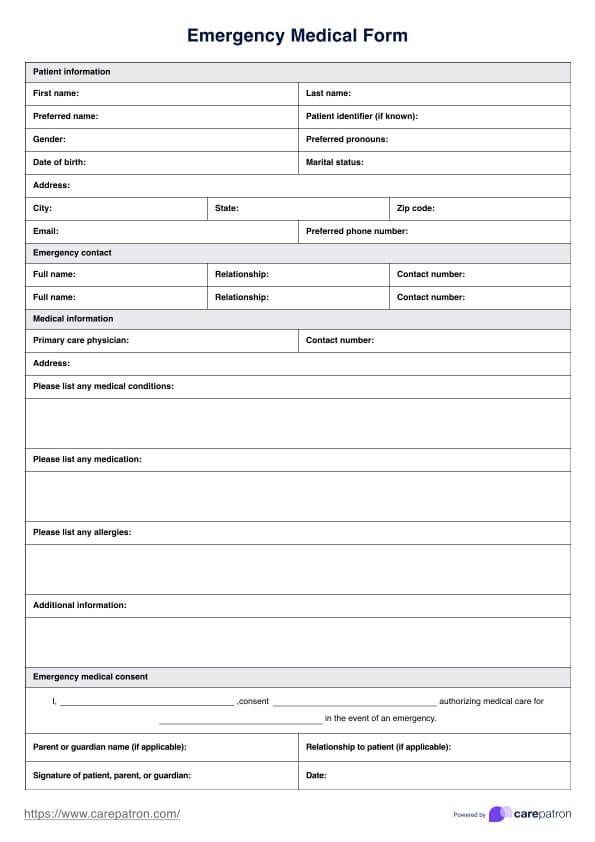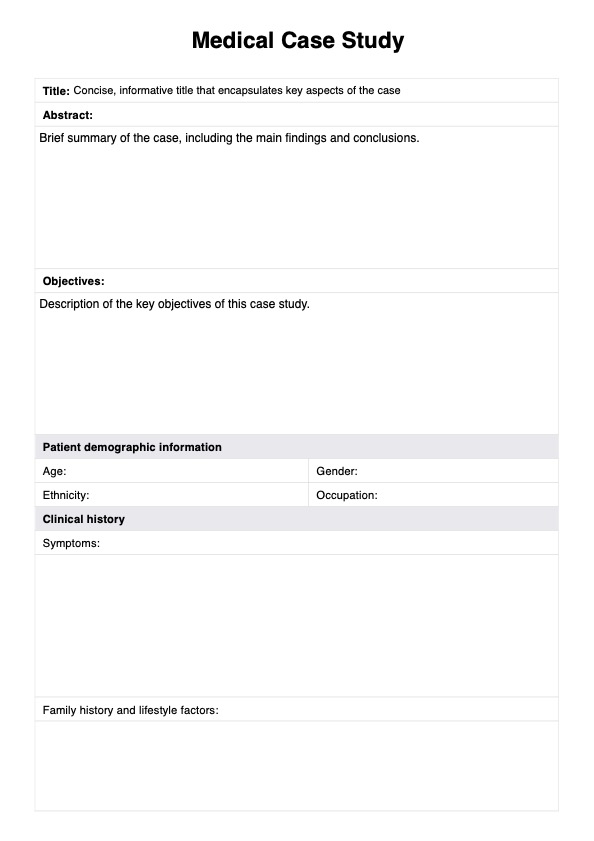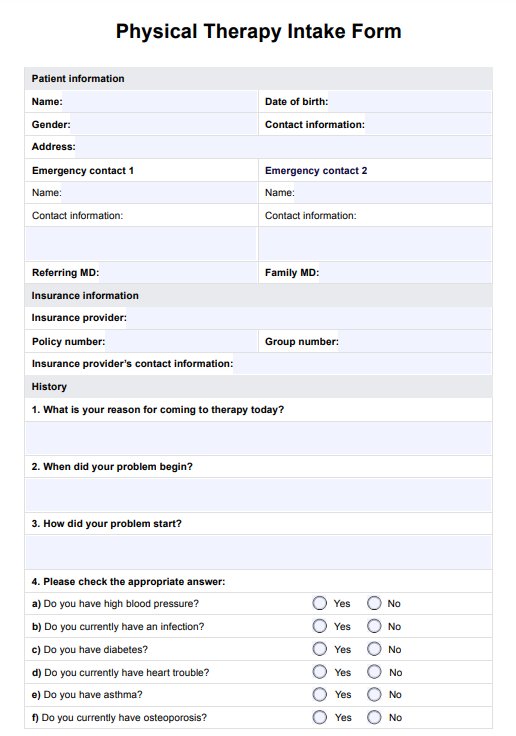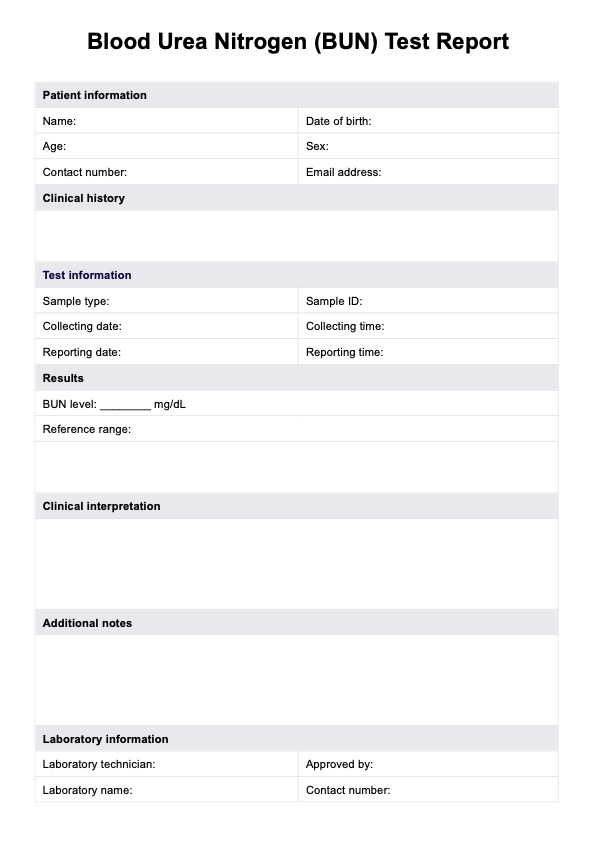Revised Cardiac Risk Index
Optimize preoperative care with our Revised Cardiac Risk Index Chart—tailored assessments and recommendations for personalized risk stratification.


What Is a Revised Cardiac Risk Index Chart?
A Revised Cardiac Risk Index (RCRI) chart is a crucial tool in healthcare, specifically designed to assess the risk of cardiovascular events in patients undergoing non-cardiac surgery. Developed to enhance the accuracy of risk prediction, the RCRI chart considers various clinical factors to provide a comprehensive evaluation.
At its core, the RCRI chart takes into account six key risk factors:
- High-Risk Surgery: This factor involves the type of surgery the patient is undergoing. Specific procedures deemed high-risk can inherently elevate the chances of cardiovascular complications.
- History of Ischemic Heart Disease: Patients with a known history of ischemic heart disease, such as a prior heart attack, are considered at a higher risk for cardiac events during surgery.
- History of Congestive Heart Failure: A patient's history of congestive heart failure is a critical element. This condition significantly contributes to the overall cardiac risk.
- History of Cerebrovascular Disease: The presence of cerebrovascular disease, including a history of strokes, is factored into the assessment, acknowledging the broader cardiovascular implications.
- Preoperative Treatment with Insulin: Diabetes and the use of insulin as part of the preoperative treatment plan are considered potential risk factors.
- Preoperative Serum Creatinine: As indicated by preoperative serum creatinine levels, renal function is a vital parameter in the RCRI chart.
Each factor contributes to a cumulative risk score, aiding healthcare practitioners in stratifying patients based on their susceptibility to cardiac events during non-cardiac surgeries. The RCRI chart is a valuable decision-making tool, assisting clinicians in tailoring preoperative strategies and interventions to mitigate potential risks. By leveraging this resource, healthcare professionals can enhance patient safety and optimize the perioperative care experience.
Revised Cardiac Risk Index Template
Revised Cardiac Risk Index Example
How Does It Work?
The Revised Cardiac Risk Index (RCRI) chart is a systematic and essential tool used by healthcare practitioners to assess the risk of cardiovascular events in patients undergoing non-cardiac surgeries. Here's a concise guide on how the RCRI chart operates:
1. Identification of Surgical Type
Begin by categorizing the type of surgery the patient is undergoing, distinguishing between high-risk and non-high-risk procedures.
2. Evaluate the History of Ischemic Heart Disease
Examine the patient's medical history for any signs of previous ischemic heart disease, including a history of heart attacks.
3. Examine the History of Congestive Heart Failure
Review the patient's health records to identify any congestive heart failure, a pivotal factor in assessing cardiac risk.
4. Consider the History of Cerebrovascular Disease
Investigate whether the patient has a history of cerebrovascular disease, such as past strokes, to gauge broader cardiovascular implications.
5. Review Preoperative Treatment with Insulin
Scrutinize the patient's diabetic status and whether preoperative insulin treatment is part of the management plan.
6. Evaluate Preoperative Serum Creatinine Levels
Assess the patient's renal function by examining preoperative serum creatinine levels, a crucial parameter in risk assessment.
7. Assign Cumulative Risk Scores
Assign scores to each identified risk factor and calculate the cumulative risk score for the patient.
8. Risk Stratification
Stratify patients into risk categories based on their cumulative scores, ranging from low to high risk.
9. Tailor Preoperative Strategies
Customize preoperative strategies and interventions based on the patient's risk category to mitigate potential cardiac risks effectively.
Access a printable version of the RCRI chart for convenient reference and documentation, ensuring seamless integration into the healthcare workflow. The RCRI chart, through its structured approach, empowers healthcare professionals to optimize perioperative care and enhance overall patient outcomes.
When Would You Use This Chart?
The Revised Cardiac Risk Index (RCRI) chart is invaluable for healthcare practitioners, particularly in non-cardiac surgeries. Here's a detailed exploration of when and why you would employ this chart:
- Preoperative Risk Assessment: Before non-cardiac surgeries, practitioners use the RCRI chart to assess the patient's cardiovascular risk. It aids in understanding the potential for cardiac events during and after surgery.
- Surgical Planning and Decision-Making: The RCRI chart becomes a pivotal resource in surgical planning, helping teams make informed decisions based on the patient's risk profile. It guides discussions on the appropriateness of surgery and the need for additional precautions.
- Optimization of Perioperative Care: Anesthesiologists leverage the RCRI chart to tailor perioperative care strategies. This includes adjusting anesthetic plans and closely monitoring patients to mitigate potential cardiovascular risks.
- Patient Counseling and Informed Consent: The RCRI chart aids patient counseling, providing a quantifiable cardiovascular risk assessment. This information contributes to the informed consent process, ensuring patients are well-informed about potential risks associated with the surgery.
- Postoperative Monitoring and Care: The RCRI chart remains relevant for postoperative monitoring after surgery. It guides intensive care teams in providing specialized care for patients at higher risk of cardiac events.
- Cardiology Consultations: Cardiologists utilize the RCRI chart during consultations to assess cardiac risk before recommending non-cardiac surgical procedures. It aids in optimizing cardiovascular health management strategies before surgery.
- Geriatric Medicine and Elderly Care: The RCRI chart evaluates cardiovascular risks associated with non-cardiac surgeries, especially when dealing with older adults. This supports the development of personalized care plans for elderly patients.
The Revised Cardiac Risk Index Chart is an essential resource, seamlessly integrating into the workflow of various healthcare practitioners. Its application ensures a comprehensive approach to risk assessment, facilitating tailored care plans and ultimately enhancing patient safety throughout the surgical journey.
What Do the Results Mean?
Interpreting the results of the Revised Cardiac Risk Index (RCRI) chart is crucial for healthcare practitioners to make informed decisions and optimize patient care. The cumulative score obtained through the assessment categorizes patients into different risk levels, each carrying distinct implications:
Low Risk
Score Range: 0-1.
Patients in the low-risk category typically have a minimal likelihood of experiencing major cardiac events during or after non-cardiac surgery. Standard perioperative care procedures are often sufficient.
Intermediate Risk
Score Range: 2.
Patients with an intermediate risk score may have a moderate chance of cardiac events. Practitioners may consider additional precautions and closer monitoring during and after surgery.
High Risk
Score Range: 3 or higher.
High-risk patients are more susceptible to significant cardiac complications. Healthcare teams should carefully tailor preoperative strategies, consider specialized interventions, and closely monitor these patients postoperatively.
Individualized Care Planning
The RCRI chart's strength lies in guiding individualized care planning. Practitioners can customize interventions for patients with specific risk factors contributing to their score, such as optimizing chronic disease management or adjusting anesthesia plans.
Informed Decision-Making
Surgeons, anesthesiologists, and perioperative teams can utilize the RCRI results to make informed decisions about the appropriateness of the planned surgery. This ensures that the procedure's benefits outweigh the potential risks for each patient.
Patient Counseling
The results of the RCRI chart facilitate transparent and comprehensive communication with patients. Practitioners can use this information to counsel patients effectively, explaining potential risks and involving them in decision-making.
Research & Evidence
In 1999, Goldman and his collaborators introduced the Revised Cardiac Risk Index (RCRI) as a refined version of the original Cardiac Risk Index, aiming to enhance the precision of risk prediction by incorporating additional factors and expanding its applicability across diverse patient populations.
This seminal development laid the groundwork for a continuous refinement process, marked by ongoing adjustments guided by insights from extensive clinical research (Roshanov et al., 2017). This process's iterative nature involved identifying and incorporating key risk factors, such as surgery type, into the RCRI chart, ensuring its contemporary relevance in modern healthcare practices (Davis et al., 2013).
The robustness of the RCRI is substantiated through extensive validation in numerous clinical studies across diverse medical settings, affirming its reliability in predicting cardiac events (Che et al., 2017). This comprehensive empirical foundation underscores the credibility and utility of the RCRI as a dependable tool for healthcare practitioners.
The widespread adoption of the RCRI into routine preoperative assessments attests to its credibility and utility, establishing it as a standard practice that guides healthcare practitioners in risk stratification and formulating personalized care plans (Murray et al., 2023).
Notably, the RCRI's commitment to staying abreast of medical advancements through ongoing research and evidence-based updates reinforces its relevance in the dynamic landscape of contemporary healthcare (Guideline Central, 2020).
References
Che, L., Xu, L., Huang, Y., & Yu, C. (2017). Clinical utility of the revised cardiac risk index in older Chinese patients with known coronary artery disease. Clinical Interventions in Aging, Volume 13, 35–41. https://doi.org/10.2147/cia.s144832
Davis, C. R., Tait, G., Carroll, J., Wijeysundera, D. N., & Beattie, W. S. (2013). The Revised Cardiac Risk Index in the new millennium: a single-center prospective cohort re-evaluation of the original variables in 9,519 consecutive elective surgical patients. Canadian Journal of Anesthesia/Journal Canadien D’anesthésie, 60(9), 855–863. https://doi.org/10.1007/s12630-013-9988-5
Guideline Central. (2020, July 31). Calculators - Guideline Central. https://www.guidelinecentral.com/calculators/2c9e8038734e3c9e0173534472a30043/
Murray, J. P., Tummala, S., Chen, T., Aldrich, D. P., Reisner, A., & Martin, S. (2023). Patterns of surgical risk assessment at a tertiary academic medical center. Journal of Brown Hospital Medicine, 2(2). https://doi.org/10.56305/001c.72712
Roshanov, P. S., Walsh, M., Devereaux, P., MacNeil, D., Lam, N. N., Hildebrand, A. M., Acedillo, R., Mrkobrada, M., Chow, C. K., Lee, V., Thabane, L., & Garg, A. X. (2017). External validation of the Revised Cardiac Risk Index and update of its renal variable to predict the 30-day risk of major cardiac complications after non-cardiac surgery: rationale and plan for analyses of the VISION study. BMJ Open, 7(1), e013510. https://doi.org/10.1136/bmjopen-2016-013510
Commonly asked questions
Healthcare practitioners, including surgeons, anesthesiologists, and perioperative teams, typically request RCRI charts to assess cardiac risk in patients undergoing non-cardiac surgeries.
RCRI charts are used during preoperative assessments to evaluate the risk of cardiovascular events associated with non-cardiac surgeries. They guide decision-making and personalized care planning.
Healthcare professionals utilize RCRI charts to generate a cumulative risk score by inputting patient data, including surgery type and relevant medical history. The score helps stratify patients into low, intermediate, or high-risk categories, guiding tailored interventions.
The time to complete an RCRI chart varies based on the complexity of the patient's history and the specific details required. Generally, it is a relatively quick process, facilitating efficient integration into preoperative workflows.


